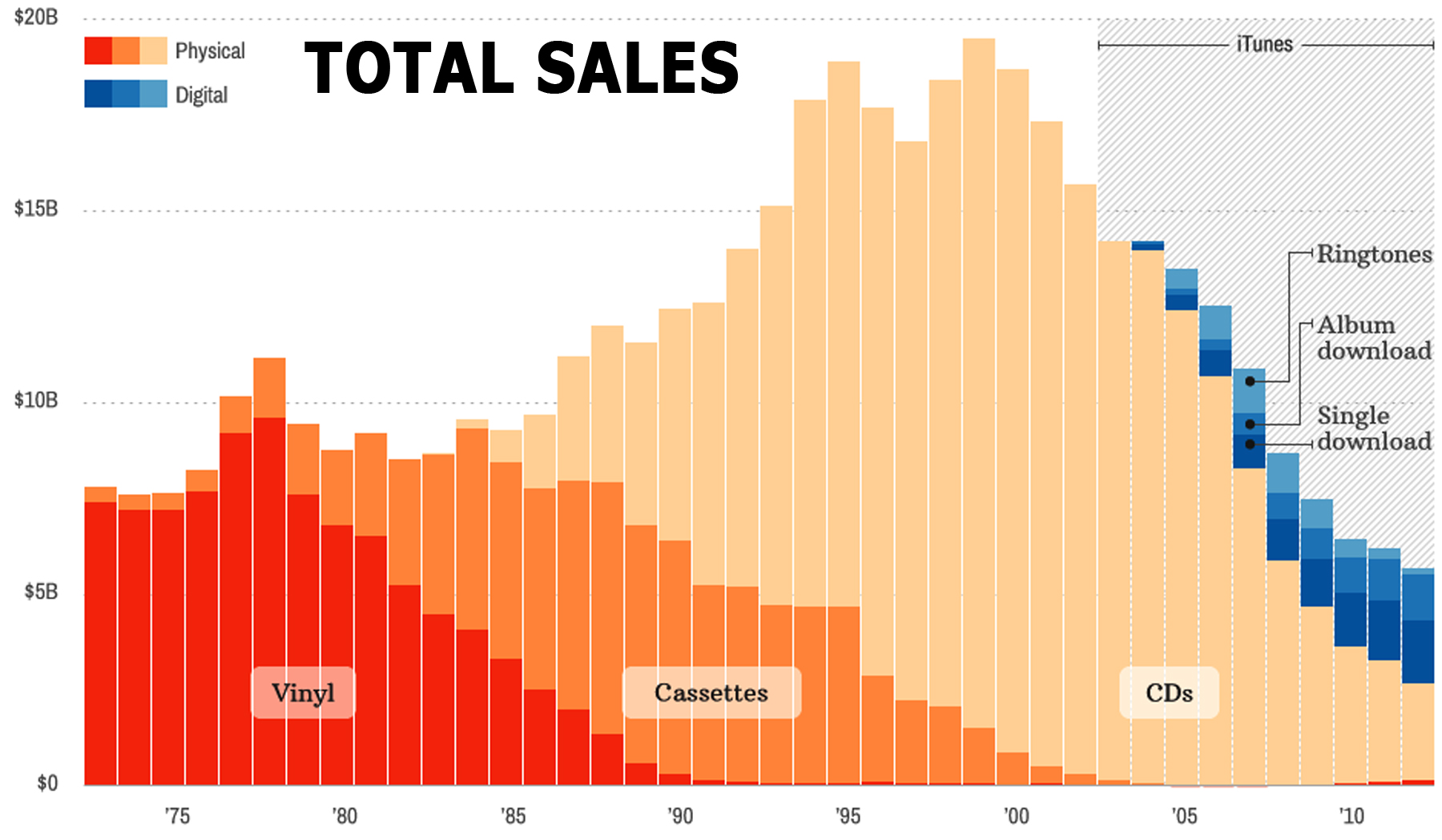By Haddon Libby
The sale of musical recordings began nearly 135 years ago with a wax cylinder encoded with grooves. Nearly forty years later in 1920, the first radio stations came into being. Both are poised for their biggest changes in history.
Those first wax cylinders created by Thomas Edison ruled the market for nearly 30 years until a flat disc overtook it in sales around 1920. It took nearly twenty years for the flat disc to overtake the cylinder in sales. Made initially made of rubber and then a shellacked mix of pulverized rock and limestone, the flat disc (referred to as the 78 due to its revolutions per minute) caused the discontinuation of the cylinder by 1929.
The demise of the 78 started almost immediately following the advent of a more sturdy vinyl disc and microgroove in the early 1930’s. In the 1950s, the 33 1/3 was used for albums containing thirty minutes of music while the 45 was used similar to the 78 as the single song format.
The demise of the 33 1/3 and 45 was in development in the early 1930s as well. Originally only in a reel to reel format, the magnetic tape was too costly used by radio stations and recording studios as a result. It was not until 1962 that the cassette tape entered the marketplace. Within twenty years of its debut, it was outselling vinyl records.
In 1982, the compact disc entered the market. Within ten years, it was the primary source of recorded music to the consumer with the complete demise of the tape by 2001. As the CD overtook the market, its replacement had entered the marketplace in 1997 – a flash drive better known to us mp3 players or iPods. These devices could hold tens of thousands of songs and were completely portable. At the same time, satellite radio was attempting to replace terrestrial radio following its 2001 launch.
As the mp3 downloads surpassed CD in sales in 2012, the mp3 demise was also underway. The first signs were in 1999 when an illegal file sharing software program called Napster showed that the purchase and ownership of music was vulnerable to a service where people could program their own music channels for free. Legal options like Pandora in 2005 and Spotify in 2008 showed that both mp3 ownership and radio stations were poised for replacement over the next decade.
Throughout time, consumers have received more and better content at a lower and lower cost. As wireless networks have gotten better, the consumer is nearly always attached connected to the Internet via their smartphones. As the consumer can choose the songs or podcasts that they want to hear on an app on their smartphone, it is inevitable that radio and mp3 ownership will see an ever shrinking percentage of the market.
To understand the financial drivers at play, Apple earned $4.3 billion from its music sale while CDs sold 193 million units in 2012. Satellite radio generated $3.5 billon in revenues while terrestrial radio generated $14 billion in ad sales of which one-third were political ads. Upstart Pandora has 80 million users and $275 million in sales while Spotify was fast on their heels with 24 million users and $250 million in sales. Overall, music revenues have dropped by nearly 75% since its peak in 1999.
It is no wonder that Apple via iRadio, Google’s All Access, Amazon’s Cloud Service and Sony’s Music Unlimited are all looking to start their own cloud music services meant to compete in this ever changing and lucrative field. History shows us that tens of billions in annual revenues will be moving to a new and less expensive delivery methods in the very near future.









































